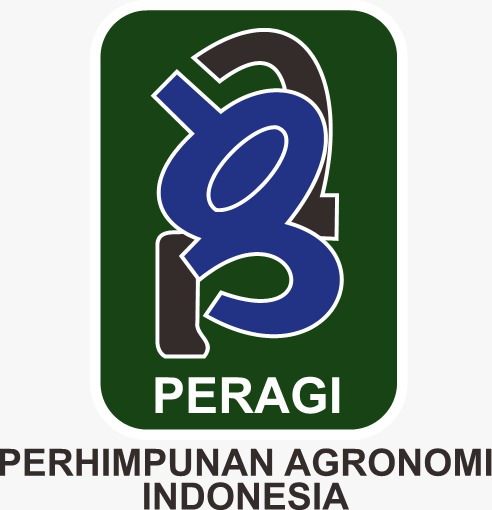The Impact of Peatland Fires on Cellulolytic Microbial Populations in Several Landuses
Abstract
Studies on the impact of peatland fires on agricultural land, especially oil palm, and rubber, are still limited. This study aims to calculate the total population of cellulolytic bacteria and determine the activity of cellulolytic enzymes qualitatively in each microbial isolate found and to determine the level of peatland degradation after the fire. The research was conducted by survey in the field. The research location is in the long jungle village of Tambang Subdistrict, Kampar Regency. At the same time, the laboratory analysis was carried out in the Pathology, Entomology, and Microbiology Laboratory, Faculty of Agriculture and Animal Husbandry, Sultan Syarif Kasim Riau University. Determination of sample points using the purposive sampling method, which is to choose a location per the study's objectives at 4 locations. The first location is oil palm land that is not burnt, the second is burning oil palm land, the third is unburned rubber land, and the fourth is burned rubber land. Each location was repeated three times to obtain 12 sample points for observation. Furthermore, at each observation sample point, two soil depths were observed, 0-15 cm and 15-30 cm. The total population of cellulolytic bacteria in oil palm and rubber plantations that were burned and not burned with different soil depths ranged from 5.3 x 109 cfu / g soil to 14.0 x 109 cfu / g soil. The clear zone ratio (Z / K) of 8 cellulolytic bacterial isolates observed was high criteria, namely> 1.76 (100%). The highest Z / K ratio was produced by bacterial isolates originating from burnt rubber plantations at a soil depth of 0-15 cm, namely 5.25.
Downloads
References
Arifin, Z., I.B.W. Gunam, N.S. Antara dan Y, Setiyo. 2019. Isolasi Bakteri Selulolitik Pendegradasi Selulosa dari Kompos. Jurnal Rekayasa dan Manajemen Agroindustri. 7 (1) : 30-37.
Baharuddin, M., A.R. Patong, A. Ahmad dan N. L. Nafie. 2014. Isolasi Dan Karakterisasi Bakteri Simbion Larva Kupu-Kupu Cossus cossus Penghasil Enzim Selulase. Al-Kimia. 2 (2): 58-68.
Baharuddin, Razak, Hock, Ahmad, Aziz, Rahman, Shah, Hassan, Sakai dan Shirai. 2010. Isolasi and Characterization of Thermophilic Cellulase-Producing Bacteria from Empty Bunches-Palm Oil Mill Effluent Compost. Journal of Applied Science. Vol.7(1): 56-62.
Elviana E. 2014. Eksplorasi Bakteri Indigenus Asal Tanah Gambut Riau Sebagai Agen Biofertilizer. Skripsi. Jurusan Biologi. Fakultas Matematika dan Ilmu Pengetahuan Alam Universitas Riau.
Herman dan Wawan. 2017. Sifat-sifat Tanah pada Berbagai Tingkat Kebakaran Lahan Gambut di Desa Rimbo Panjang Kecamatan Tambang. Jurnal Online Mahasiswa. 4 (2): 1-13.
Hidayah. 2012. Uji Potensi Bakteri Selulolitik Asal Tanah Gambut di Cagar Alam Biosfer Giam Siak Kecil-Bukit Batu dalam Mendegradasi Lignin. Skripsi. Jurusan Biologi. Fakultas Matematika dan Ilmu Pengetahuan Alam Universitas Riau.
Khairiah, E., S. Khotimah dan A. Mulyadi. 2013. Karakterisasi dan Kepadatan Bakteri Pendegradasi Selulosa pada Tanah Gambut di Desa Parit Banjar Kabupaten Potianak. Jurnal Protobiont. 2 (2): 87-92.
Marina, O. Lambui dan I. N. Suwastika. 2018. Karakterisasi Selulase Asal Bakteri Tanah Danau Kalimpa’a Sulawesi Tengah. Journal of Science and Technology. 7 (2): 138-147.
Mintari, D. Astiani, dan T.F. Manurung. 2019. Beberapa Sifat Fisik dan Kimia Tanah Gambut Terbakar dan Tidak Terbakar di Desa Sungai Besar Kabupaten Ketapang. Jurnal Hutan Lestari. 7 (2): 947-955.
Murtiyaningsih dan Hazmi. 2017. Isolasi dan Uji Aktivitas Enzim Selulase pada Bakteri Selulolitik Asal Tanah Sampah. Jurnal Agritrop. 15 (2): 293-308.
Pratiwi, E., T.D. Satwika, dan F. Agus. 2018. Keanekaragaman Mikroba Tanah Gambut di Bawah Hutan dan di Bawah Perkebunan Sawit di Provinsi Jambi. Jurnal Tanah dan Iklim. 42 (1) : 69-78.
Rachman, M.H. 2020. Pemulihan Biota Tanah Gambut Satu Setengah Tahun Setelah Terbakar di PT. Sumber Sawit Sejahtera Kabupaten Pelalawan. Tesis. Magister Ilmu Pertanian. Universitas Riau.
Rohyani, D. Zul, dan B.L. Fibrianti. 2014. Isolasi Bakteri Indigenus yang Potensial Sebagai Agen Biofertilizer Asal Tanah Gambut di Kawasan Zamrud dan Taman Nasional Tesso Nilo, Riau. Jurnal Fakultas Matematika dan Ilmu Pengetahuan Alam. 1 (2): 417-429.
Roza RM, Martina A, Fibrianti BL, Zul D, Ramadhan N. 2013. Isolasi dan Seleksi Jamur Selulolitik dari Tanah Gambut di Perkebunan Karet Desa Rimbo Panjang Kabupaten Kampar Riau. Prosiding Semirata FMIPA Universitas Lampung.
Wahyuni, D., S. Khotimah dan R.Linda. 2015. Eksplorasi Bakteri Selulolitik pada Tingkat Kematangan Gambut yang Berbeda di Kawasan Hutan Lindung Gunung Ambawang Kabupaten Kubu Raya. Jurnal Protobiont. 4 (1) : 69-76.
Copyright (c) 2023 Novian Hendro; Zulfarina Zulfarina; Nurul Qomar

This work is licensed under a Creative Commons Attribution 4.0 International License.
Authors who publish with Jurnal Agronomi Tanaman Tropika (JUATIKA) agree to the following terms:
Authors retain copyright and grant the Jurnal Agronomi Tanaman Tropika (JUATIKA) right of first publication with the work simultaneously licensed under a Creative Commons Attribution License (CC BY 4.0) that allows others to share (copy and redistribute the material in any medium or format) and adapt (remix, transform, and build upon the material for any purpose, even commercially) with an acknowledgment of the work's authorship and initial publication in Jurnal Agronomi Tanaman Tropika (JUATIKA).
Authors are able to enter into separate, additional contractual arrangements for the non-exclusive distribution of the journal's published version of the work (e.g., post it to an institutional repository or publish it in a book), with an acknowledgment of its initial publication in Jurnal Agronomi Tanaman Tropika (JUATIKA). Authors are permitted and encouraged to post their work online (e.g., in institutional repositories or on their website) prior to and during the submission process, as it can lead to productive exchanges, as well as earlier and greater citation of published work.







 More Information
More Information



